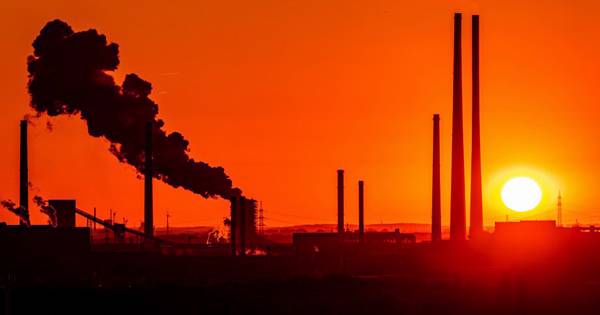A research team at the University of Southampton estimated the amount of carbon dioxide present during the warmest part of the Pliocene epoch about 3.3 million years ago. At that time the seas were much higher and the polar caps were much smaller, the planet was 3 degrees Celsius (5.4 degrees Fahrenheit) warmer than it is today. Researchers believe that by 2025, the amount of CO2 in the atmosphere will be higher than at any time in the past 3.3 million years. The findings are published in scientific reports.
Knowledge of CO2 during the geological past is of great interest because it tells us how climate systems, ice sheets, and sea-levels reacted to previously elevated CO2 levels. Climate conditions said Dr. Elwin de la Vega, who led the study.
The team used microscopic fossilized zooplankton from deep-sea sediments from the Caribbean Sea to determine atmospheric CO2. The combination of their shells depends on the pH of seawater, which is instead influenced by atmospheric CO2.The work focused on a period of 200,000 years, from 3.35 to 3.15 million years ago, at the beginning of the Mid-Pisenzian warming period, 3.3 million years ago, when the climate gradually warmed, when the average global temperature was much higher than today.In doing so, researchers were able to produce a picture of how carbon dioxide levels have changed every 3,000 to 6,000 years.
Dr. de la Vega and colleagues established that during the warmest period of time, the amount of carbon dioxide in the atmosphere was between 380 and 420 parts of CO2 per million (ppm). In May 2020, it crossed the 417 ppm mark for the first
time since the record began.
After Pliocene CO2 levels exceeded by 2022, future CO2 levels are unlikely to be felt on Earth for the past 15 million years, since the Middle Miocene climate is the best, warmer than Pliocene, concludes Dr. de la Vega.
Values are constantly changing due to various reasons, but the growing trend is well established. Over the past decade, this level has increased by about 2.4 ppm per year. Even holding a conservative value for the current level, it is clear that within five years ’time it will surpass an unseen level from Pliocene. Experts say it’s not just the amount of carbon dioxide in the atmosphere, it’s how fast it is released, and it’s the effects of other greenhouse gases, such as methane.
















